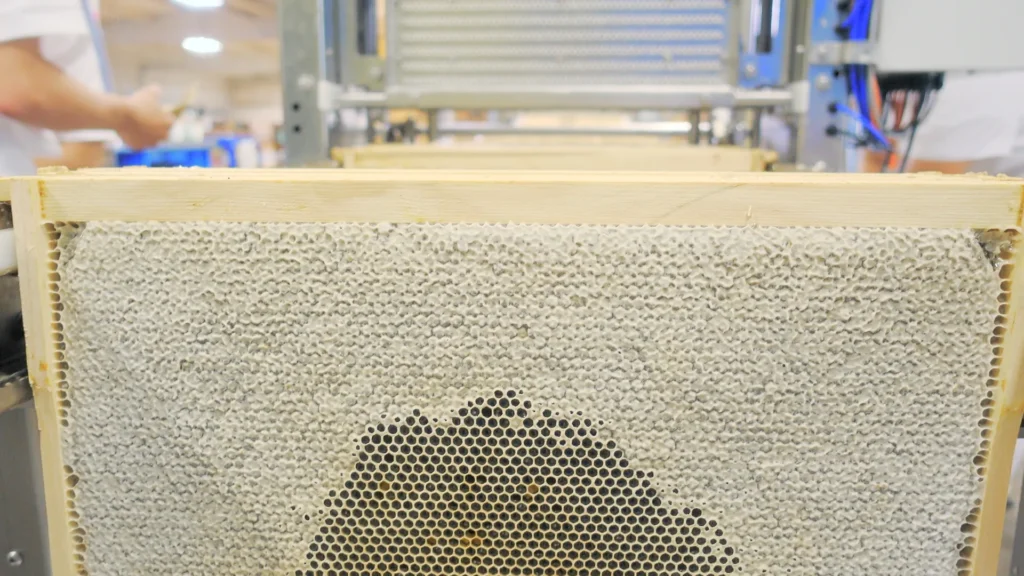
7 Surprising Facts About Raw Honey
Raw honey is making a resurgence as a healthy treat. The “nectar of the gods” has been valued for millennia as a rare luxury and a natural medicine. In modern times, increasing numbers of health-conscious individuals are turning to raw honey instead of processed honey or sugars for its health benefits. Honey is even gaining a reputation as a “superfood”.
However, honey marketing has become intensely competitive and the growing popularity of raw honey seems to have attracted the attention of refined sugar and processed honey vendors. The internet is flooded with misinformation on raw honey, both positive and negative. Even popular health reference websites (which are actually run by for-profit companies selling ads) continually get it wrong. Here’s one example of a web page on honey that gets many things completely wrong: it’s mostly counter-factual rubbish (I suspect it’s created by a content creators that knows nothing of honey and was funded by either a large processed honey or refined sugar company or association)
Here are some properties of raw honey that will probably surprise you:
1. Raw honey does not last indefinitely in your cupboard.
The commonly cited trope that honey found in the Egyptian pyramids was perfectly edible after 3000 years is almost certainly a myth. It has circulated so widely, and by such respected authorities as National Geographic and the Smithsonian, that it’s easy to see why it’s accepted as true by nearly everybody. As Peter Borst reported in the American Bee Journal, there were two ancient Egyptian samples that could have given birth to this myth. One sample was a dried film on the inside of a jar that was almost certainly not honey, while the other appeared to be honeycomb dating to about 1350 BC that had been reduced to a “dark brown mass”, which doesn’t sound appetizing.


Even though raw honey is remarkably safe and never spoils in a way that becomes toxic, it does deteriorate over time. Like any organic substance, honey changes and degrades over time, losing its freshness, flavor and some of its healthiness over weeks to years. The rate of honey aging depends greatly on storage conditions, especially temperature and humidity. Honey aging and deterioration can be measured in the laboratory. The most important measure of freshness of honey is HMF (5-hydroxymethylfurfural). The best way to maintain freshness of honey over months to years is to keep it in cold storage1. Properly stored, fresh raw honey will always be the healthiest, and the most delicious.
Interestingly unprocessed honey has a built-in freshness indicator: honey darkens as it ages. While this doesn’t mean that the lightest honey is the freshest – the initial color of fresh honey depends on many factors, including the floral source, a darkening of color over time compared to when the honey was fresher does indicate a loss of freshness.
Let us change how you think of honey. Get 10% off your next order (up to $110 order value) with coupon code: NectarOfTheGods
2. Pregnant women can eat raw honey safely.
Pregnant women who do not have diabetes can eat raw honey without worry. Unlike most raw foods, including meat, vegetables and diary products, in the case of honey, “raw” does not carry any increased risks for anybody, including pregnant women. Pasteurization of honey is done only to extend the shelf life and prevent fermentation: it adds nothing to safety. Here’s a detailed explanation of raw honey’s safety in pregnancy, which agrees with the world-renowned Mayo Clinic’s assessment of raw honey’s safety2.
Some people may naturally extrapolate the fact that children below one year of age should not eat honey to mean that raw honey could be hazardous to the developing fetus. Three points here: pasteurized honey is no safer than raw honey in terms of the rare disease of infant botulism. The pasteurization process does not affect the Clostridium botulinum spores that exist all over nature, and sometimes in honey, and can cause infant botulism. Secondly, these spores, even if eaten be a pregnant woman, cannot cause illness in the pregnant woman whose normal intestinal flora offer complete protection from the spores. The spores are not absorbed into the blood stream, so they cannot possibly reach the placenta (which they wouldn’t cross even if they could magically get there). Finally, infants need to ingest the spores orally to contract infant botulism, while fetuses get their nutrition from the umbilical cord directly into their bloodstream rather than eating and digesting, which is why an infant’s intestine is not yet colonized by healthy bacteria.
3. You can’t get botulism from raw honey.
I’m going to go out on a limb here and assume that everyone (of the 3 people) that reads this post is older than one year old. Infant botulism is a very rare, but real, complication of feeding any honey (raw or pasteurized) to children younger than one. By one year of age, our intestines are colonized by healthy bacteria (normal intestinal flora) that protect us from becoming infected by the spores that can cause infant botulism in young, un-colonized intestines. (Note that honey is a pre-biotic, which means eating honey helps the healthy bacteria in our instestines thrive.)
The more common and more serious food-borne botulism usually results from eating spoiled food, especially improperly canned vegetables and meats. Food-borne botulism is caused by the ingestion of large amounts of the neurotoxin, botulinum toxin (the same toxin used in botox injections) produced by the Clostridium botulinum bacteria growing in the spoiled food. C. botulinum bacteria cannot grow and produce botulinum toxin in raw honey so real honey cannot cause food-borne botulism3.
4. Any raw honey has amazing anti-bacterial properties.
Manuka honey, through both a legitimate reason and a very expensive, but remarkably successful marketing campaign, has become known for having powerful anti-bacterial properties. It may surprise you that ALL raw honeys have potent natural anti-bacterial properties. Here’s just one of many peer-reviewed research publications demonstrating the anti-bacterial properties of raw honey. The article concludes “Overall, the antibacterial activity of honey has been proven”.
Manuka honey’s special claim is that, unlike most raw honeys, it retains strong anti-bacterial properties even when sterilized by heat. This makes it especially appropriate for sterilized medical-grade wound dressings, but rather overpriced as a health food. If you’re buying raw honey to eat, you can rest assured that your favorite raw honey also has impressive antibiotic properties. If you’re eating sterilized or pasteurized honey, you’re missing out on much of the flavor and some of the healthiness of raw honey.
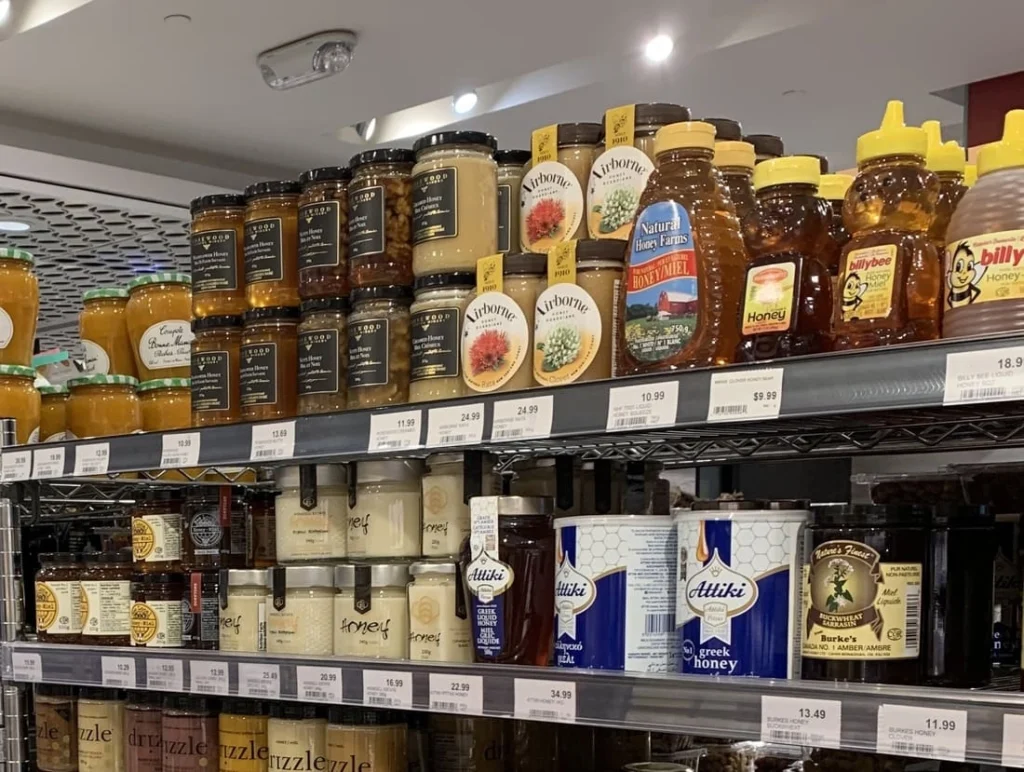
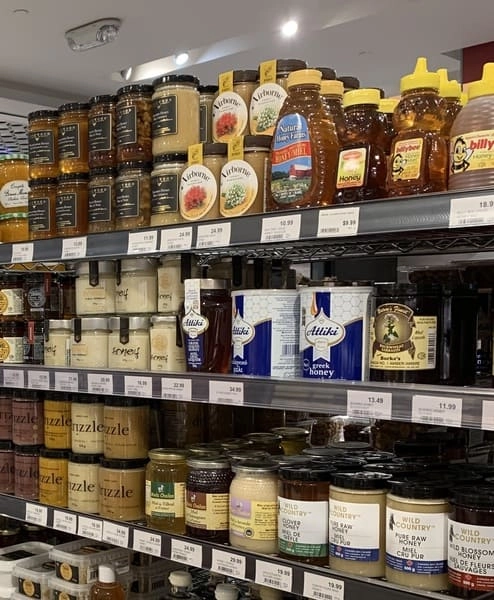
5. Antibacterial properties of honey (including MGO and UMF) are not a health benefit of honey if you’re eating the honey.
Raw honey’s natural antibiotic properties are often viewed as a health benefit, especially by proponents of manuka honey that spend small fortunes on honey with higher concentrations of methylglyoxal (MGO) reflected in the UMF number (higher UMF = more MGO).
Eating raw honey confers an impressive collection of well-evidenced health benefits, especially if honey replaces dietary processed sugars. Unless you are using honey specifically to treat a superficial bacterial infection, or for topical treatments of some skin conditions like acne, or small wounds or burns, antibiotic properties are not a health benefit honey. Note that unlike medical/pharmaceutical antibiotics, the anti-bacterial factors/substances in raw honey do not get absorbed into your body in any way that acts as an antibiotic. For honey that you eat, the antibacterial and anti-fungal properties of honey prevent toxic spoilage by bacterial or fungal growth. Any pure raw honey has ample antibacterial and anti-fungal properties that it won’t spoil in any way that’s harmful to eat. To quote the Mayo clinic again “food-borne pathogens actually do not survive in honey”. So, the antibiotic and anti-fungal properties make raw honey safe to eat, but they are not properties of honey (like antioxidant, anti-inflammatory, pre-biotic, anti-diabetic and a bunch of other properties) that make you healthier from eating raw honey.
6. That USDA-certified organic honey in your supermarket wasn’t produced by American bees.
Virtually all honey legitimately labeled “USDA Organic” on store shelves is imported from other countries, usually Brazil, Mexico and India. This is quite counter-intuitive and can be misleading, but you can easily check the label of any USDA certified organic honey to see where it comes from. Certifying honey as organic is very complex compared to other foods due to the fact that bees forage for nectar over a wide area. The USDA has proposed, but never formalized organic honey certification guidelines. The fact that it is nearly impossible to produce legitimate “organic” honey in the USA may play a role in the continued lack of formalized guidelines. It is certainly a formidable task to verify honey meets the organic apiculture guidelines proposed by the National Organic Program (NOP) (but never finalized by the USDA) for organic honey, with the most difficult to assess and/or enforce being the 1.8 mile (3km) foraging radius:
The concept of organic honey becomes very complicated when one considers that bees forage for nectar within at least a 3km (1.8 mile) radius. Under organic certification equivalence agreements, the USDA does accept honey certified in other countries as organic. It’s worth noting that “organic” honey from Brazil, Mexico, India fetches a lower price than regular, non-organic-certified bulk honey from Canada or the United States on the honey commodity market. Worth thinking about if you’re paying top dollar for the USDA Organic honey that comes from India and costs the packaging company much less than domestic non-organic-certified honey.
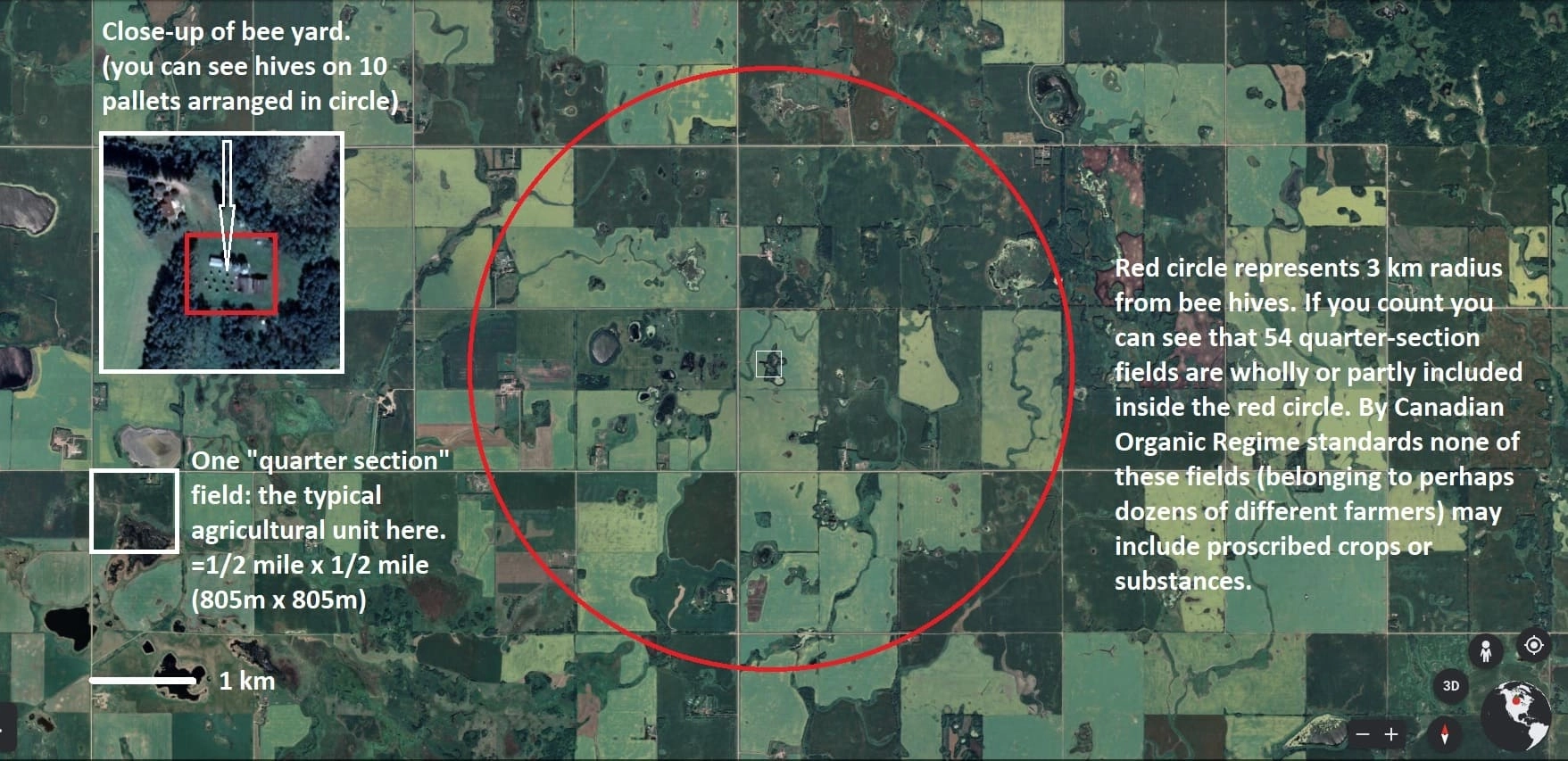
7. Raw honey is (emphatically) not “just another sugar”.
It makes me cringe when I hear “honey is just another sugar” from physicians, or, even worse, nutritionists. This couldn’t be further from the truth. While the largest components of honey are fructose and glucose (both sugars), raw honey is metabolized completely differently by your body than processed sugars. This is thought to be in part due to the ratio of fructose and glucose in natural honey and in part due to organic compounds like flavonoids, polyphenols and bee enzymes present in raw honey.
A big problem with eating processed sugars is the rapid spike in blood glucose (sugar high) followed by a rebound hypoglycemia (low blood sugar – the crash). Repeating this cycle over the long term can cause progressive insulin resistance followed by the development of diabetes. Eating raw honey results in a slower, longer, healthier blood glucose profile. Honey consumption actually reduces the risk of developing diabetes and research is underway to determine if honey can be used as a treatment for diabetes4.
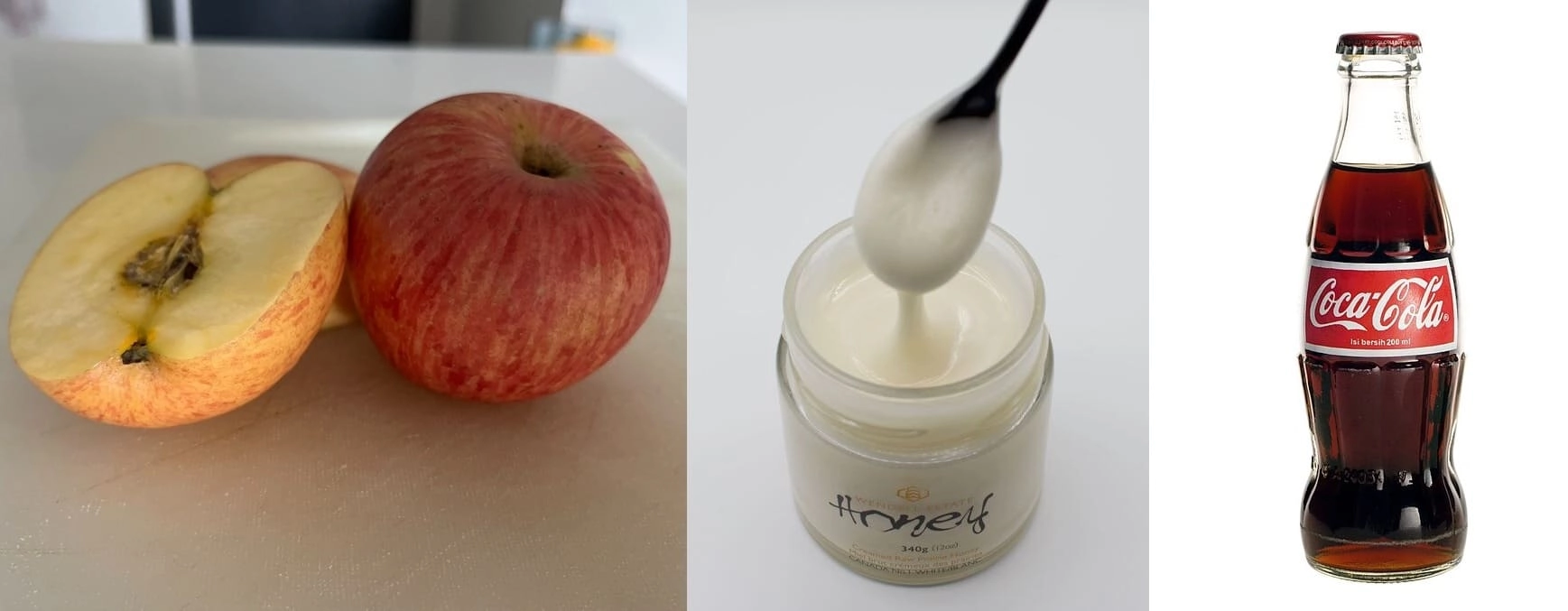
Because eating honey so efficiently replenishes your liver glycogen stores, honey is the perfect energy food for exercise, and honey energy doesn’t come with the ill health effects of processed sugar in the common sugar-based energy snacks and drinks. Honey has also been shown to promote weight loss in active individuals.
In an increasing number of ways, research is showing that eating honey often has the opposite effect compared to the unhealthy effects of eating processed sugars. Eating a spoon of raw honey is probably at least as healthy (in some different ways) as eating a fruit. The health benefits of eating honey are quite the opposite of the health harms of consuming processed sugars.
Let us change how you think of honey. Get 10% off your next order (up to $110 order value) with coupon code: NectarOfTheGods
Footnotes:
- Keeping soft-set, or creamed, raw honey in cold storage is ideal for long-term storage. With liquid honey, cool or cold storage conditions can cause it to granulate or crystallize more rapidly. Crystallized honey can be returned to a liquid state by placing the container in a warm water bath (about 40 C / 100 F).
- The Mayo Clinic article is talking about raw honey in the context of individuals with suppressed immune systems, but the fact of raw honey being just as safe as pasteurized applies to everybody. Pregnant women at high risk of developing gestational diabetes should monitor their blood sugars. However, eating raw honey, especially if it replaces dietary sugars, reduces the risk of developing diabetes in the general population.
- Clostridium botulinum spores can exist in both raw and pasteurized honey, but these spores are in an inactive state of “suspended animation” and cannot produce botulinum toxin. It is these spores that can colonize and grow in an infant’s intestine and cause infant botulism. However, they are completely harmless to those of us older than a year of age: they simply pass right on through.
- The research on honey as treatment for diabetes is in its early stages yet, with most research done on animals. Honey is a carbohydrate, so if you do have diabetes, monitor your blood sugars when you eat honey as you would with any carbohydrate.
Jeremy Wendell
Share this story

2 comments
Thank you for sharing this insightful post. I found it to be engaging and informative. Keep up the excellent work.
[…] are the scourge of any hospital. You might be surprised to learn that this is a property shared by ANY natural raw honey2. What sets manuka honey apart from most (but not all) other honeys is that manuka honey is retains […]